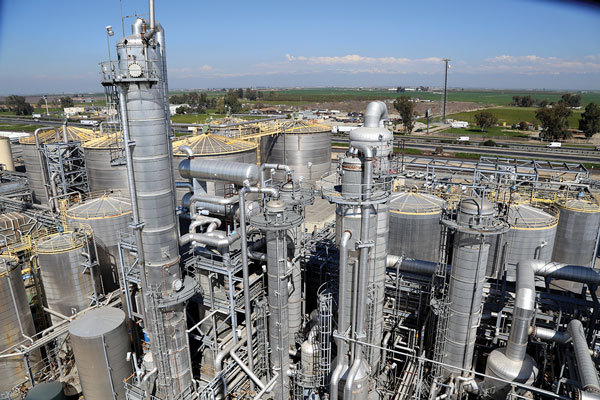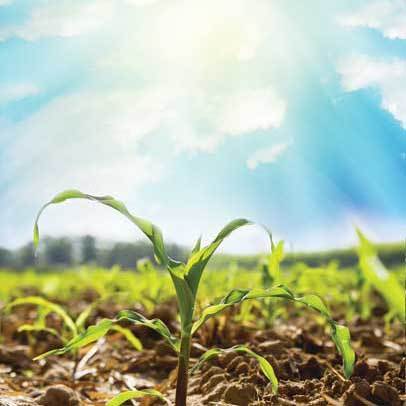Spotlight: Adding Value Across the Board






April 4, 2019
BY Ron Kotrba
Minnesota Soybean Growers Association
Minnesota became the first state in the nation in 2002 to pass a statewide biodiesel blend requirement. The Minnesota mandate, first implemented at 2 percent in 2005, served as a model for other states. “Some people said, ‘If they can do it in Minnesota’s colder climate, why can’t we do it here in our state?’” says Chris Hill, a soybean farmer in Brewster, Minnesota, and a director with the Minnesota Soybean Growers Association and American Soybean Association. “They saw what we did here and used it as a mold for their states and had lots of success with it. It’s like getting a pump going—once it’s going, it’ll run on its own.” Through MSGA and the checkoff program, Minnesota farmers can be credited for starting that pump from which so many others have benefited.
Biodiesel crosses Minnesota’s geographic, demographic and political party lines. From value-added uses and improved prices for soybean oil—long considered a drag on soymeal prices—to city dwellers reaping the health benefits of improved diesel exhaust emissions, Hill says biodiesel is one of those rare issues everyone can get onboard with. “It’s a win-win-win-win for everyone,” he says.
Minnesota blazed another biodiesel trail last year by increasing the blend requirement to 20 percent in the summer months. “Last year was our first year with B20, and we had a real good year,” says Jim Willers, a soybean farmer in Beaver Creek, Minnesota, director with the United Soybean Board, and a Minnesota Soybean Research & Promotion Council board director.
Willers was among the early contingent of MSGA farmer-members taking the biodiesel message to the state capital, proposing the idea to legislators to alleviate downward price pressure from a glut of soybean oil on the market. “We went there marching around the capital, asking people about it—that’s how it started,” he says. “We went home, got organized and spent two more years working on it.”
Minnesota’s biodiesel requirement adds 63 cents per bushel to a farmer’s bottom line, Hill says, and lowers the cost of soymeal for livestock producers. Willers says the B20 mandate is equivalent to removing 223,000 cars from the road. But it also adds $1.7 billion in economic impact to the state, creates more than 5,000 direct and indirect jobs, and lowers greenhouse gas emissions in this age of growing climate uncertainty.
“Minnesota farmers are forward-thinking because we are at the headwaters of where things have to head downstream and overseas,” Hill says. “We’ve always been a taker of price. With biodiesel, we have the ability to add value to our products. We needed something to be done, so why not do it ourselves? We can be the promoters of our own achievements. We have shown that biodiesel works well, it requires no modifications to equipment or vehicles, and it helps our bottom line.”
After all these years, farmer-led MSGA and MSR&PC—conceptualizers of the first state biodiesel mandate—continue to be fierce advocates for Minnesota’s biodiesel industry through fantastic truck builds like that featured on Discovery Channel’s Diesel Brothers, tours, meetings with legislators, informative publications and continued research through instruments such as a new Soy Innovation Campus.
RPS
Renewable Process Solutions Inc. has commissioned two supercritical biodiesel production facilities co-located with existing ethanol plants. The supercritical biodiesel process (SBP) is a patented technology developed by RPS, now optimizing its third-generation model. “We have a few more facilities coming online in the coming years,” says Rahul Bobbili, RPS president and chief technology officer. “It’s becoming more evident that integrating SBP with an ethanol facility reduces capital investment by a third compared to a greenfield project. Also, a 5 MMgy co-located SBP recovers its capital investment within two to three years.” Ethanol facilities are the ideal location to produce biodiesel with broad advantages over greenfield projects.
SBP can use methanol or ethanol to convert distillers corn oil (DCO) to biodiesel. Bobbili says ethanol can increase biodiesel yields up to 5 percent with a better carbon intensity score. “Also,” Bobbili adds, “using ethanol further reduces capital investment by eliminating processing steps for methanol recovery and purification.”
SBP glycerin is 97-plus percent pure. “Ethanol plants can sell glycerin to traders at a higher price,” Bobbili says, “or blend with their wet or dried distillers grains to gain a minimum value of 7 to 8 cents per pound.”
The integrated utility load reduces capital investment and equipment. “Utility streams such as power, steam, cooling water and compressed air are usually available in excess at an ethanol facility,” Bobbili says. “A co-located SBP uses a small portion of that utility to convert DCO into biodiesel.”
Co-location also reduces storage tankage. “A co-located SBP only needs biodiesel and methanol storage tanks, whereas the number of storage tanks required for a greenfield project is quite high,” Bobbili says. If ethanol instead of methanol were used, this would further reduce necessary tankage. “When DCO is fed into the process, byproducts from the co-located SBP are piped to various locations in the ethanol facility to capture their value,” he says.
Labor cost savings for a co-located SBP are significant compared to greenfield projects, as no additional operators are required. “SBP is a continuous, hands-free operation with minimal oversight and periodic maintenance,” he says. “Since we use no catalyst whatsoever, the process is clean with no impurity accumulation to bring down the equipment for maintenance.”
Ethanol plants with SBP can improve DCO margins by 10 to 12 cents per pound—not including LCFS credit values. Furthermore, increasing capacity to handle other feedstocks will bring more income.
There is much discussion lately on renewable diesel vs. biodiesel. Bobbili says it’s not economically viable to co-locate renewable diesel production with an ethanol refinery. “The cost is four times that of a biodiesel facility,” he says. “Also, the margin on biodiesel is far higher than renewable diesel.”
Bobbili is confident more ethanol plants will produce biodiesel in coming years. “We welcome the ethanol industry to reach out to RPS to learn more about the supercritical biodiesel process, and to see our operating facilities,” he says.
Advertisement
Advertisement
Advertisement
Advertisement
Related Stories
U.S. farmers are expected to plant 83.5 million acres of soybeans in 2025, down 4% when compared to last year, according to the USDA National Agricultural Statistics Service’s annual Prospective Plantings report, released March 31.
Agriculture Secretary Brooke Rollins on March 31 visited Elite Octane LLC, a 155 MMgy ethanol plant in Atlantic, Iowa, to announce the USDA will release $537 million in obligated funding under the Higher Blends Infrastructure Incentive Program.
ADM and Mitsubishi Corp. on March 27 announced the signing of a non-binding memorandum of understanding (MOU) to form a strategic alliance to explore potential areas of future collaboration across the agriculture value chain.
The U.S. EPA on March 24 asked the U.S. District Court for the District of Columbia to dismiss a lawsuit filed by biofuel groups last year regarding the agency’s failure to meet the statutory deadline to promulgate 2026 RFS RVOs.
The USDA on March 25 announced it will release previously obligated funding under the Rural Energy for America Program To receive the funds, applicants will be required to remove “harmful DEIA and “far-left climate features” from project proposals.
Upcoming Events










